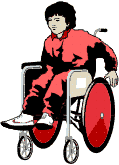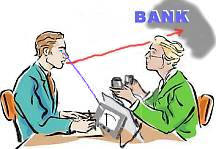Home Search Level 0 Level 1 Level 2 Level 3 Level 4 Level 4Pro Level 5 C/Sing Solo
| Tech terms | Scales | Axioms | Drills | Checksheets | Processes | Prep. lists | C/S terms | C/S tool | Grades | Cramm | Points | KTW | Online |
|
Home Search Level 0 Level 1 Level 2 Level 3 Level 4 Level 4Pro Level 5 C/Sing Solo |
|
|
| Tech terms | Scales | Axioms | Drills | Checksheets | Processes | Prep. lists | C/S terms | C/S tool | Grades | Cramm | Points | KTW | Online | |
Engram Running
Basic Definitions for PC's (C/S 1)
Part of educating a pc in Engram Running is clearing the procedure and commands of R3RA. Also the words of the correction list for Engram running, L3RH, should be cleared before starting a pc on running R3RA. The definitions given here are cleared as well. This step is often called "Engram Running, C/S Instruction No 1."
|
Basic Definitions, Engram Running (C/S 1 for Engram Running) |
|||
| Assess Automatic Bank Basic Basic Basic Black Field Chain Clear Clear Intensive Duration Engram |
Engram
Clearing Engram Running Erased Erasing Erasure Floating Needle Incident Invisible Field Key-in Key-out |
Lock
Misemotion More Solid Multiple Illness Original Item Pain Pleasure Moments Postulate Pre-assess Pressure Somatic |
Psycho-somatic R3RA Secondary Sensation Solid Somatic Somatics Time Track Unburdening |
The auditor cannot see the pc's pictures but he has to get a solid reality upon their existence. Because just because he can't see the pc's pictures he must never slip into becoming careless about them and not handle them correctly.
If an auditor doesn't really know what these things are (erasure,
Locks, Secondaries, Engrams) he cannot, of course, handle them.
The most basic error in Engram running is just not knowing what these are and that
they are there to be handled and that these, and these alone, cause psychosomatic
illnesses and inexplicable pains, etc., etc.
If the auditor is going to handle the aches, pains, unwanted sensations and
psychosomatic illnesses of the pc, it requires that he fully understands these basic
definitions.
Millions of complications stem from the simple fact that a pc
records experiences in mental image pictures and that these thereafter can
affect his body. These complications are described in medicine, in psychiatry
and psychology without much understanding of what is causing them.
One has to understand that mental image pictures are all
there is in the pc's "mind". Understanding that one has understood the total of
aberration. There is not something else there. No "id", no "ego" (Freudian
expressions). There
are only mental image pictures.
These can be found and erased when you use the exact procedures of Engram
running.
The pc often is unable to confront the actual Engram at
once. He offers the auditor a Lock, a time when he had the somatic. Let's say we
are handling a headache. One runs this Lock - one always runs whatever the pc offers and you don't force the pc.
After putting the pc through the incident a couple of times it may become
evident that the incident is getting more solid or it simply isn't erasing. One finds an earlier recording. This
could well turn out to be a Secondary. The pc had a moment of loss and cried and
also had a headache. This Secondary may or may not erase. If it does one
ends off of course as it's finished. But if it does not erase and isn't erasing after a
couple of times through, one then asks for an earlier one.
The auditor would probably find an actual Engram, a
recording of a time when the head was actually injured. One runs this and after a couple of times through, finds it
isn't erasing and so goes earlier for another Engram.
This one erases. When it erases the whole Chain of headaches erases as well. And that is the end of the pc's headaches.
The auditor then asks for other Somatics or sensations and
handles them the same way.
It is all done by using the technique called R3RA without
variation.
Since these recordings contain mainly other-determinedness
(pictures of others doing things) the auditor always has more control over the pc's mental image pictures than the
pc does. Thus the pictures do
what the auditor says. This point too must be grasped by an auditor or he will
be waiting on the pc to act or move in time.
Whatever the symptom, pain, sensation, whatever, it
stems from
either the body directly (such as a broken bone, a gallstone or immediate
physical cause) or is part of the content of a mental image picture- the Locks, Secondaries
and Engrams on the Chain.
The Engram Clearing auditor does not audit ideas or think. He is
handling mental recordings. Ideas are in them. Ideas come out of them. But think
is not part of Engram running.
In Engram running we simply handle Locks, Secondaries and Engrams. These are
basically recordings or pictures.
INCIDENT: The recording of an experience, simple or complex, related by the same subject, location or people. It is understood to take place in a short or finite time period such as minutes or hours or days.
DURATION: Length of time; time during which anything continues.
|
|
ENGRAM: is a mental image picture which is a recording of a time of physical pain and unconsciousness. It must by definition have impact or injury as part of its content.
SECONDARY: is a mental image picture of a moment of severe and shocking loss or threat of loss which contains misemotion such as anger, fear, grief, apathy or "deathfulness". It is a mental image picture of a time of severe mental stress. It may contain unconsciousness. When it is restimulated by a similar but lighter experience another mental image picture is recorded which becomes a Lock on the Secondary and serves to keep the Secondary alive. A Secondary is called a Secondary because it itself depends upon an earlier Engram with similar data but real pain, etc.
LOCK: is a mental image picture of an incident where one was knowingly
or unknowingly reminded of a Secondary or Engram. It does not itself contain a
blow or a burn or impact and is not any major cause of misemotion. It does not
contain unconsciousness. It may contain a feeling of pain or illness, etc, but
is not itself the source of it. Example: One sees a dog and feels a pain in the
leg. This is a
Lock on an Engram of being bitten by a dog. The picture of seeing a dog and feeling
pain is locked to the incident of getting bitten by a dog. When one finds a
Lock it can be run like
any other mental image picture.
ERASURE: is the action of erasing, rubbing out, Locks, Secondaries or
Engrams.
ERASING: means the content of the incident is less intense, less feeling of pressure or other sensation or the pictures less clear and vivid when actually confronted.
MORE SOLID: means the content of the incident is more intense, increased sensation or pressure or the picture more clear and vivid when actually confronted.
|
Erased |
ERASED: after going through the basic incident (usually numerous times) it will finally have been fully erased. In Engram Clearing this happens when the pc finds the basic postulate that held the Chain of incidents in place.
ENGRAM RUNNING: Techniques used to run Engrams with. Also the activity of applying these techniques to a pc.
R3RA, Engram running by Chains: The principle process used on CT-5.
ENGRAM CLEARING: This is CT Grade 5 - Engram Clearing. It uses Engram running by Chains, Routine-3-RA as its main process. It leads to Engram Clearing Completion. Routinely the pc will be found to go Clear at some point during Engram Clearing. This can be at any point of the whole Grade 5. If the pc states he feels he went Clear he is given a Clear Intensive by a specially trained auditor to find out if he in fact has made it.
POSTULATE: A consideration, decision or idea. In Engram running a postulate will be found in the basic incident. It tends to explain the whole Chain. "I am going to die!", "I'll never get out of here!", "This makes me sick!", "My arm is numb!", "I have lost the fight!", etc., etc. would be examples of such postulates in Engrams. They have an aberrative effect upon the pc.
CLEAR: A being who no longer has his own Reactive Mind. The State of Clear is routinely achieved through Engram running, but it is not always the case. If pc feels he went Clear he is given the Clear Intensive to find out for sure.
CLEAR INTENSIVE: This is a special RD done after Engram Clearing. The purpose is to find out if the pc made it to Clear or not. It is done when the pc originates that he believes he went Clear. This can actually happen at any point in Engram running. It is done if the pc feels he made it; the purpose of the RD is then to ensure that he actually did. The Clear Intensive is done by a professional auditor and as such not part of this CT Manual. If the pc did not make it he can get more processing on Engram Clearing. If he completes that level without going Clear there are other processes that can be done so he will make it to Clear. This is the so-called alternative route, which has to be supervised by a competent case supervisor. At that level most of the auditing itself can be done solo, the pc is auditing himself on specified processes under competent supervision. It is sometimes called The Clear Certainty RDô or CCRD.
 |
Somatics: Discomforts, |
SOMATIC: means essentially body sensation, illness or pain or discomfort. "Soma" means body.
SOMATICS: This is a general word for uncomfortable physical perceptions coming from the Reactive Mind. It is a general label word. It covers "pain" as well as "sensation". To understand the source of these feelings, one should have a knowledge of Engrams, ridges and other parts of the Reactive Bank. In CT anything is a SOMATIC if it stems from the various parts of the Reactive Mind and produces an awareness of reactivity.
PSYCHO-SOMATIC: means
Somatics or pains stemming from the mind.
PAIN: a feeling of hurting. It is composed of heat, cold, electrical, and the combined
effect of sharp hurting. If one stuck a fork in his arm, he would experience
pain. When one uses Pain in connection with clearing one means awareness of
heat, cold, electrical or hurting stemming from the Reactive Mind.
Therefore what we call Pain is itself heat, cold and electrical. If a pc
experiences one or more of these impulses from his Reactive Mind, we say he is
experiencing Pain. "Electrical" is the bridge between sensation and Pain and is difficult to
classify as either Pain or sensation when it exists alone.

|
Sensations: |
SENSATION: All other uncomfortable perceptions stemming from the Reactive Mind are called Sensations. These are basically "pressure", "motion", "dizziness", "sexual sensation", and "emotion and misemotion". There are others but these are all combinations of the above and definable in these five general categories. If one took the fork in the pain definition above and pressed it against the arm, that would be "pressure". "Motion" is just that, a feeling of being in motion when one is not. "Motion" includes the "winds of space", a feeling of being blown upon especially from in front of the face. "Dizziness" is a feeling of disorientation and includes spinning, as well as an out-of-balance feeling. "Sexual sensation" means any feeling, pleasant or unpleasant, experienced during sexual restimulation or action. "Emotion and Misemotion" include all levels of the complete tone scale except "pain"; emotion and misemotion are closely connected to "motion"; they are only a finer particle action. A Bank solidity is a form of "pressure", and when the sensation of increasing solidity of masses in the mind occurs, we say "the Bank is beefing up". All these are classified as Sensations.

MISEMOTION: 2.0 and below on the tone scale. Anything that is unpleasant emotion such as antagonism, anger, fear, grief, apathy or a death feeling.
The TIME TRACK: is the consecutive record of mental image
pictures which accumulates through the pc's life or lives. It is very
exactly dated.
PLEASURE MOMENTS: are mental image pictures containing
pleasure sensations. They respond to R3RA. One seldom addresses them unless the
pc is fixated on some type of "pleasure" to a point where it has
become highly aberrated.
|
|
BLACK FIELD: is just some part of a mental image picture where
the pc is looking at blackness. It is part of some Lock, Secondary or Engram. In CT
it can occur (rarely) when the pc is exterior, looking at
something black. It responds to R3RA.
INVISIBLE FIELD: is just a part of some Lock, Secondary or Engram that is "invisible". like a black field it responds to
R3RA.
PRESSURE SOMATIC: is in Engram running considered to be a symptom
in a Lock, Secondary or Engram, simply part of the content.
KEY IN: is the action of recording a
Lock on a Secondary or Engram.
KEY OUT: is an action of the Engram or Secondary dropping away
without being erased.
FLOATING NEEDLE: occur when a key-out occurs or when an Engram is erased.
When one keys out (rather than erasing) an Engram, the pc can always
later get a key-in of that Engram again and so
become ill, etc. again. How to deal with this is covered under Engram running
EP.

MULTIPLE
ILLNESS: means the pc is physically
uncomfortable or ill from several Engrams of different types all restimulated.
One runs one somatic Chain at a time, running each new symptom that is assessed
or stated by the pc.
CHAIN: means a series of recordings of similar experiences. A Chain has
Engrams, Secondaries and Locks. Example: Head injury Chain in the
sequence and run by R3RA: seeing sporting goods in a shop window (Lock), losing a bat
(Secondary), hit in the head with a bat (Engram). The Engram is the earliest date, the
Secondary a later date, the Lock the most recent.
By using one somatic at the time to trace it back and by staying on the Chain
of only one
somatic you get back down the single Chain without dispersing
all over the place. Thus one runs the Chain of one
particular somatic or discomfort or complaint down to erasure before
doing the next somatic or discomfort or complaint.

AUTOMATIC BANK: When a pc gets picture after picture after
picture all out of control. This occurs when one isn't following an assessed
somatic or complaint or has chosen the wrong one - one which the pc is not
ready to confront. It can also happen as a result of overwhelming the pc with rough
TRs or going very
non-standard. Some pc's turn up in their first session with Automatic Banks. The
thing to do is carefully assess the physical complaint for longest or best read
and gently handle that Chain well.
BASIC: This is the first experience recorded in mental image
pictures of that type of pain, sensation, discomfort, etc. Every Chain has its
basic. When one gets down to the basic on a Chain it (a) erases and (b) the whole
Chain vanishes for good. Basic is simply
earliest.
UNBURDENING: As a basic is not at once available on any Chain one usually unburdens it by running later
Engrams, Secondaries and Locks.
The act of unburdening would be digging off the top to get at the bottom as in
moving sand. As you run off later incidents, the ability of the pc to
confront it also increases and basic is easy to run when finally contacted.
BASIC BASIC: 1) is the first Engram on the whole Time Track. At this time
this is a theoretical concept in Engram Clearing. The pc will usually go Clear
without having to contact such an incident. But as the theory goes - if we could find and
erase the very first Engram of the whole Time Track, that would be the end of
the Time Track itself as we know it.
2) Basic Basic: This belongs to advanced CT. It is beyond
the scope of the Grades 0-4 and Engram running. It means the most basic of all basics
it has been possible to establish; erasing it results
in clearing. It is an implanted incident described and audited on the Clearing Course.
The Clearing Course is only done if the pc did not go Clear on Engram Clearing.
If the pc goes Clear on Engram Clearing there is no need to try to contact or
run this implanted incident.

ASSESS: in Engram running means choose, from a list or statements,
which item or thing has the longest read or the pc's interest. The longest
read will also have the pc's interest oddly enough.
PRE-ASSESS: Special assessment in R3RA, Engram running by Chains, where the auditor finds the type of somatic by assessing a list of all classes of Somatics that will produce a Chain. When the type of Somatic is found the auditor has the pc state the exact Somatic in his own wording. If it reads and pc is interested in handling it it is taken up. The pc's statement of the Somatic is called 'The Original Item'.
ORIGINAL ITEM:
The item found through Pre-assessment and stated in the pc's words that are
fitted into the R3RA commands and run to its Basic which is erased.
You have to know these definitions very very
well so you don't have to
memorize them but just know them and you will really get results
with Engram running. The biggest failure in training auditors was their lack of understanding of what they were
handling and their additive ideas, confusions and "think".
The discoveries of Engram running were basic and vital and opened
a new unexplored frontier. The names were chosen because they didn't also mean
something else in another field of science.
These terms are essential to any training or use of Engram running.
To Engrams,
Basic Definitions, Print-out
|
Home Search Level 0 Level 1 Level 2 Level 3 Level 4 Level 4Pro Level 5 C/Sing Solo |
|
|
| Tech terms | Scales | Axioms | Drills | Checksheets | Processes | Prep. lists | C/S terms | C/S tool | Grades | Cramm | Points | KTW | Online | |